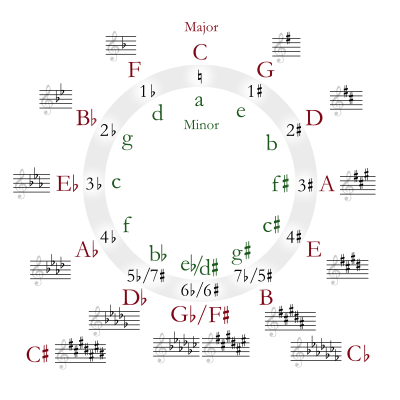I only learned to play by reading the notes of sheet music, and translating it to simple music. I didn't have the ear to sing harmony to the melody unless someone was strongly influencing me, in spite of an alto voice that often strained to the higher notes a melody required. I can hear a few tones, and pick out a melody with difficulty, but I can't play by ear beyond the most basic of phrases.
I have looked at the theory, and marvelled at styles of music. I have tried to hear the structure of jazz music that I have heard is predictable. Now, in addition, I marvel at the math of it.
Ever wonder why the piano has octaves? Why there are less black keys than white? I didn't until I saw an instrument of 5 keys played in Burkina Faso. It didn't make sense how they could play music with less keys. It was the same kind of magic that my grandmother, in her living room, high on her organ, would make. The music was made for the collective, but I never knew how it was possible.
Turns out, the ear likes to hear distinct notes, and there are only a few made with sound waves that make sense. In fact, the notes separated by an octave are double, or half of the other's frequency.
Similarly, there is symmetry in the sound waves of a fifth. This recently came to my attentions when I reviewed a book of sheet music I had received when I bought a synthesizer 20 years ago. At the back of the book was a diagram called the Circle of Fifths.

The circle of fifths represents the relationship between the twelve tones (7 white keys, 5 black) of an octave. It takes 7 half steps, or tones, to span a "perfect fifth". Counting clockwise, and starting at the top with C, the perfect fifth of C is G, of G is D, of D is A etc. After B major, I start to get a little confused, but this is a chart that helps explain more of chord progression.

It turns out that scales can make an octave contain 4, 5, 6, 7, 8 or 12 different pitches.
Within an octave, there are predictable ratios:
1/1 unison C
2/1 octave C
3/2 perfect fifth G
4/3 fourth F
5/4 major third E
8/5 minor 6th Ab
6/5 minor 3rd Eb
5/3 major 6th A
9/8 major 2nd D
16/9 minor 7th Bb
15/8 major 7th B
16/15 minor 2nd C#
It all makes me think of the incredibly beautiful Leonard Cohen song, Hallelujah, and the lyrics he sings in the first chorus while King David, a man after God's own heart, a musician, and an adulterer figures out the chord progression of the song:
Now, I've heard there was a secret chord
That David played, and it pleased the Lord
But you don't really care for music, do you?
It goes like this, the fourth, the fifth
The minor fall, the major lift
The baffled king composing Hallelujah
Hallelujah
Hallelujah
Hallelujah
Hallelujah
No comments:
Post a Comment